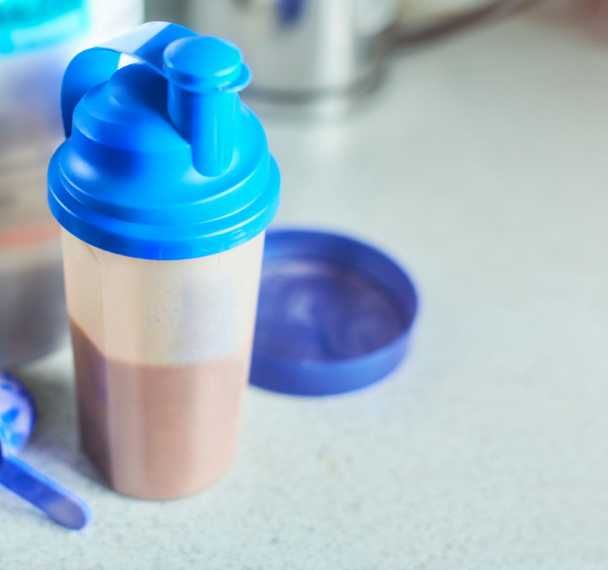What is a flavouring with modifying properties (FMP)?
Sep 12, 2023
Introduction
Are you confused about all the types of flavourings out there? Don't worry, we've got you covered! In this blog post, we take a deep dive into the flavourings with modifying properties (FMPs).
Expand your knowledge and gain insights into their impact on flavours and applications in the food and beverage industries. We'll also discuss the differences between FMPs, flavour enhancers, and sweeteners, helping you navigate the complex world of flavourings with confidence.
Note: Flavour regulations are continuously updated and vary across countries. In this blog, we only referred to the European legislations (1334/2008) also followed by the UK.
Flavouring with modifying properties (FMP)

Flavourings
As a reminder, flavourings are products which are added to food in order to impart or modify odour and/or taste and not intended to be consumed as such.
Natural and non-natural flavourings are made up of chemical substances (e.g. flavouring substances, flavouring preparations) created through chemical processes.
Check out the previous blogs to understand what exactly a flavouring is and learn the difference between natural and non-natural flavouring.
FMPs

Flavourings with modifying properties (FMPs) are food ingredients that fall under the flavour regulation (EC) No 1334/2008 and can be labelled as “natural flavour”.
They are used to modify the odour, flavour and/or taste of the food/beverage, especially when dealing with undesirable flavour notes when using plant-based proteins, nutrients or adaptogens or when working toward reducing sugar or salt.
They may or may not have a distinct flavour characteristic on their own and their effects can include increasing, decreasing, or changing the perception of individual sensorial flavour characteristics and add roundness, depth and complexity.
Some examples include:
🔸Impact the duration of the perception of specific characteristics of the flavour profile, and/or
🔸Reduce specific flavour off-notes, (e.g. metallic), and/or
🔸Intensify specific flavour characteristics, (e.g. fruitiness) and/or
🔸Reduce specific flavour characteristics (e.g. bitterness).
If a modification of sweetness, sourness and saltiness occurs, these modifications must not be the primary or exclusive effect.
Some sweeteners have flavour modifying properties when used below their sweetness threshold. For example, Neohesperidine DC is an authorised flavouring substance under Regulation 1334/2008 at a level of up to 5 mg/kg.
When used in a FMP and added in a food/beverage product, it increases the perceived fruitiness and jamminess and reduces the perceived bitterness.
In this example, the FMP modifies specific flavour characteristics (fruity, jammy, bitter) which influence the flavour profile of the product, rather than enhancing the existing overall flavour profile.
Flavour enhancer and sweeteners

Food additives, as defined by the Regulation (EC) No 1333/2008, are not considered flavourings with modifying properties.
As a reminder, all food additives are included in the ingredient lists on product labels which must identify both the function of the food additive in the finished food (i.e. sweetener) and the specific substance used either by referring to the appropriate E number or its name (e.g. E 954 for ‘Saccharin’).
Flavour enhancer

Flavour enhancers are food additives that may not have a distinct flavour characteristic on their own but their main function is to enhance the overall flavours of the food/beverage.
Flavour enhancers are added to food:
🔸To amplify the existing taste and/or odour of a food/beverage, and/or
🔸To increase the overall perception of all flavour characteristics, and/or
🔸To increase a single flavour perception so significantly that it is out of balance relative to the modification of the other flavour characteristics.
For example, monosodium glutamate (E621) is considered a flavour enhancer as it enhance the umami and savoury taste in foods especially sauces and savoury snacks.
In the case of increasing sweetness, a flavour enhancer is added mainly to enhance the sweetness of food/beverage but not exclusively. If the intended function of the flavour enhancer is to enhance sweet flavour, this should be to reduce the amount of added sweet ingredients in the food/beverage.
The same approach would apply if the flavour enhancer is added mainly to enhance the saltiness or sourness of food/beverage.
Other examples of flavour enhancers allowed In the European Union (EU) and UK:
🔸Glutamic acid (E620)
🔸Monopotassium glutamate (E622)
🔸Calcium diglutamate (E623)
🔸Monoammonium glutamate (E624)
🔸Magnesium diglutamate (E625)
🔸Disodium guanylate (E627)
🔸Dipotassium inosinate (E631)
Sweetener
Sweeteners are food additives used to exclusively increase a sweet taste in food/beverage or in table-top sweeteners.
Examples of sweeteners allowed In the European Union (EU) and UK in foods and beverages:
🔸Sorbitol (E420)
🔸Acesulfame-K (E950)
🔸Aspartame (E951)
🔸Saccharin (E954)
🔸Sucralose (E955)
🔸Steviol glycosides (E960)
🔸Aspartame-acesulfame salt (E962)
🔸Maltitol (E965)
As mentioned before, Neohesperidine DC is an authorised flavouring substance in FMP under Regulation 1334/2008 at a level of up to 5 mg/kg.
Neohesperidine DC (E959) is also classified a flavour enhancer at a level of up to 5 mg/kg and as a sweetener for uses at levels between 10 to 150 mg/kg under Regulation 1333/2008 on additives.
Sensory validation
There are two sensory tests that should be applied to demonstrate that the purpose of a flavouring with modifying properties follow the legislation.
Test 1
Demonstrate that the flavouring with modifying properties does not have exclusively a sweet, sour or salty taste.
For example, a FMP has to be significantly less sweet than the recognition threshold of sugar (ISO threshold for sweetness and saltiness: 1.5% sucrose and 0.25% for NaCl in water) in an unsweetened base and at its maximum use level.
Test 2
Demonstrate that the flavouring with modifying properties does not have exclusively a sweet, sour or salty taste in the desired food/beverage product.
This test is done by determining the sensory profile with and without the FMP in the desired food/beverage under conditions of intended use. The relevant sensory attributes that are compared must be established prior to the test by the sensory scientist.
If a substance in a food or beverage product modifies multiple flavour characteristics without any one being significantly more intense, it can be categorised as a flavouring with modifying properties rather than a flavour enhancer or sweetener.
The maximum recommended dosage of the FMP in a food/beverage product should be provided by the flavour supplier and based on these two sensory tests. This dosage should not be exceeded in order to ensure the functionality of the FMP and its compliance with the legislation.
If the flavouring is used in combination with another flavouring that has modifying properties, then it is necessary to conduct a new set of sensory tests for the combined flavourings.
Conclusion
In conclusion, flavouring with modifying properties is a field that is continuously evolving to tackle emerging food and beverage formulation challenges such as incorporating high levels of vitamins and minerals, exploring new superfood ingredients, and utilising innovative plant-based protein sources. FMPs also offer a way to differentiate products from the competition by modifying targeted flavour characteristics and adding roundness, depth, and complexity.
Now that you have a clear understanding of the differences between flavouring with modifying properties, flavour enhancers, and sweeteners in food and beverage applications, it's time to explore FMPs and how they can assist you in your product development journey.
Disclaimer
Flavour regulations are continuously updated and vary across countries. In this guide, we only referred to the European legislations (1334/2008) also followed by the UK.
The flavouring legislation information provided in this document is for general information, guidance and educational purposes only and it is not a substitute for professional regulation advice. Accordingly, before taking any actions with flavourings based upon such information, we encourage you to consult directly the appropriate legislation(s) or regulation professionals. The use or reliance or any information contained in this document is solely at your own risk.
Link to related blogs you may enjoy
🔶Flavourings Unwrapped: What is a flavouring?
🔶Natural vs. Non-Natural Flavours: A Comprehensive Guide
🔶What You Need to Know Before Using Flavourings
References
Previous experience includes working at a flavour house, where I received comprehensive flavour trainings.
European legislations: Flavouring Ingredients EC (1334/2008) https://www.legislation.gov.uk/eur/2008/1334/contents
European flavour association (EFFA) https://effa.eu/eu-legislation/flavouring-legislation
EFFA Guidance Document on the EC Regulation on Flavourings https://effa.eu/library/guidance-documents
Food Standards Agency, Approved additives and E numbers, 2023 https://www.food.gov.uk/business-guidance/approved-additives-and-e-numbers#sweeteners
Regulation (EC) No 1333/2008 of the European Parliament and of the Council of 16 December 2008 on food additives https://eur-lex.europa.eu/legal-content/EN/TXT/?uri=CELEX:32008R1333
British Society of Flavourists https://www.bsf.org.uk/








